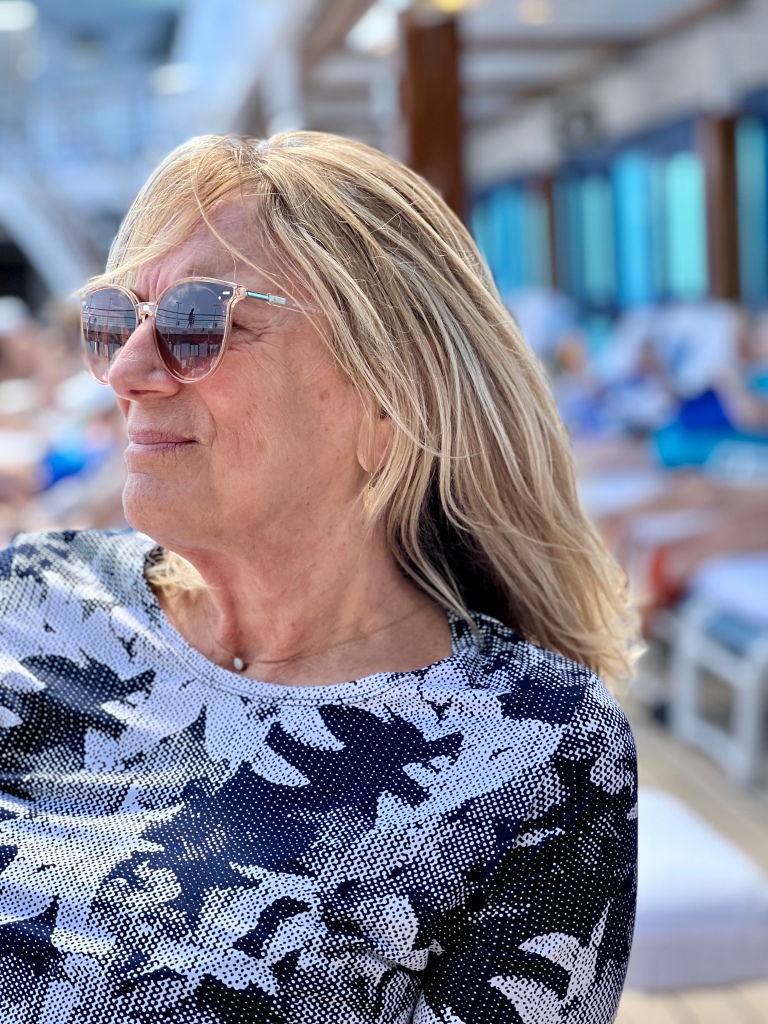“Visions” in ANS – A Unitary Theory of Healing Through Touch
The current issue of ANS includes the new ANS section featuring works focused on the scholarship of Rogerian Nursing Science. This section is called “Visions,” the title of the Rogerian Nursing Society journal. Visions was founded in 1993, and became a part of ANS in 2023, with the Visions article appearing as the last article is every print issue of ANS. The current Visions article is titled “A Unitary Theory of Healing Through Touch,” authored by Marlaine C. Smith, PhD, RN, AHN-BC, HWNC-BC, HS-GAHN, FAAN and Sean M. Reed, PhD, APRN, ACNS-BC, ACHPN, FCNS, SGAHN. Here is a message from Dr. Smith about this work:
The publication of this article has been a long time coming! It was one of those manuscripts sitting in the “To Do” pile waiting for the two of us to find enough time together to update, refine, and polish it before we felt it was ready for submission. The practice theory that we developed was born from the findings of a qualitative study of the experiences of persons with advanced cancer receiving massage and simple touch. The qualitative study was “nested” in a RCT (Kutner, Smith, Corbin et.al., 2008) focused on studying the outcomes of both massage and simple touch (a “control condition” that the research team developed consisting of laying hands on 10 locations of the body for 3 minutes at each location). Dr. Jean Kutner and I were co-PIs on this study, and during data collection we received comments from the data collectors and those providing the touch that the participants in both groups were sharing rich, detailed accounts of their experiences. We realized we needed to capture these experiences in a qualitative study. Toward that end a subgroup of the team conducted interviews of 17 participants. Smith and Reed analyzed the data from the interviews. Both of us shared a unitary worldview, and it was clear that our theoretical perspectives were shaping how we conceptualized and languaged the findings. One’s philosophical/theoretical perspective informs all theory development but is often not made explicit. We used a constructivist, retroductive theory development process where both inductive and deductive processes informed the development of the theoretical concepts. The assumption is that theories, especially at the practice level, are developed within a larger conceptual/philosophical system of ideas, ours being Rogers’ Science of Unitary Human Beings. I still remember our collaborative theory development process…how much fun it was….the creativity…the A-Has of discovery as our analysis led to articulation and elaboration of the concepts.
As we state in the article (Smith & Reed, 2023), healing, from the definitions of unitary scholars, is a transformative process characterized by remembering one’s integral nature, awareness of wholeness, appreciating wholeness, and/or coming into right relationship. So the concepts of sensing, reflecting, and connecting specify how touch facilitates this process of healing. From a Rogerian perspective healing through touch is perceiving the whole, one’s bodily feelings, integrating information toward transformative perspectives, and experiencing self as integral with others and the universe. The metaphor of “Sanctuary” was used to capture the essence of the experience of healing through touch. The theory was linked to Rogerian science through the concepts of wholeness (sensing), awareness (reflecting) and presence (connecting) (p. 8).
There are some important “take aways” in this article. We’ve already mentioned the first…the joy of theory development. It is important to demystify the process of developing and linking concepts to create the meaning of phenomena important to nursology, and to do so in a way in which the ideas are: 1) aligned with a larger conceptual/theoretical system (correspondence); 2) fit together at the same level of abstraction in a clear and simple way (coherence); and 3) offer usefulness for the professional practice and advancement of the discipline (pragmatics) (Kaplan, 1964). Another important “take away” is that touch is literally at our fingertips, and we need to use it as an expression of our intentions to promote health, healing and wellbecoming. While there are more data supporting the effects of massage for healing, the findings from both quantitative and qualitative studies suggest that even simple touch has perceived benefits. In my experiences as a patient and family member of patients in acute and long-term care, it seems that the use of touch as a caring-healing modality is rare or absent. If we value theory-guided, evidence-based practice, then this can no longer stand! We have clear evidence of the benefits and a practice-level theory explaining its linkages to healing. It’s time to intentionally integrate touch into nursing practice as a standard of care. During our research we heard from family members who were hesitant to touch their seriously-ill loved ones. Engaging family members and their loved ones in discussions about the kinds of touch that might be comforting is a good way to have family members express their care through touch and for the patient to receive the healing from this love and caring. Based on the theory and evidence it is time for forms of touch such as backrubs, foot and hand massage and expressing caring and comfort through simple touch to be included in foundational courses in nursing. These competencies easily align with the AACN Essentials’ Domains of Knowledge for Nursing Practice and Person-Centered Care and the Concepts of Communication, Compassionate Care, Evidence-Based Practice and Clinical Judgement.
Practice theories in the discipline of nursing can offer descriptions of how health patterning modalities like touch can make a difference in health/healing/wellbecoming and guide nursing practice. It is our hope that this article contributes to that end.
Kaplan, A. (1964). The Conduct of Inquiry. San Francisco: Chandler Publishing.
Kutner, J.S., Smith, M.C., Corbin, L., et al. (2008). Massage therapy vs. simple touch to improve
pain and mood in patients with advanced cancer: A randomized trial. Annals of Internal
Medicine. 149(6), 369-379.
Smith, M.C. and Reed, S. (2023). A unitary theory of healing through touch. Visions:
Scholarship of Rogerian Science in Advances in Nursing Science, 46(2),219-232. doi: 10.1097/ANS.0000000000000487.









Trackbacks & Pingbacks